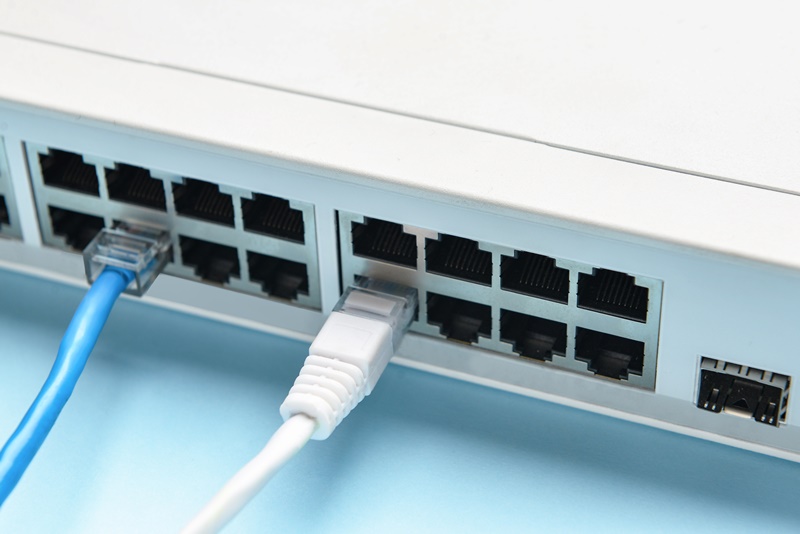A arquitetura de redes vem se aprimorando ao longo do tempo, e a rede óptica passiva (PON) é um grande exemplo disso.
Tal como outros produtos e serviços tecnológicos, a tecnologia de redes evolui em busca de resultados cada vez mais eficazes para as demandas de consumo. A rede PON oferece alta escalabilidade, grande largura de banda e instalação fácil e prática.
Desempenhando um importante papel na melhoria da conexão, garante, com uma única fibra óptica, a transmissão de dados, voz e vídeo, sem abrir mão da alta performance e usando elementos passivos de distribuição de sinal.
Quer saber mais sobre a rede PON? Nesse artigo, reunimos todas as informações sobre seu funcionamento e benefícios.
O que é a rede PON e como funciona?

A Rede Óptica Passiva (PON), no inglês Passive Optical Network, é uma rede de ponto multiponto, feita de fibra óptica, que utiliza divisores ópticos no transporte de dados de um ponto de transmissão a múltiplos pontos, até atingir o usuário final.
É descrita como passiva porque usa energia elétrica apenas no ponto de transmissão e no de recepção, abstendo-se da eletricidade nos processos de combinação e divisão, razão pela qual tem um eficiente custo operacional.
Os sinais ópticos transmitidos na rede PON, através da OLT (Optical Line Terminal), redirecionam os dados pela fibra óptica até os splitters (divisores ópticos passivos). Dados de áudio, vídeo, sistema de segurança e de automação são integrados nos terminais de usuários, ONU (Optical Network Unit), e transmitidos em uma PON única.
A principal função da rede PON é melhorar o serviço de internet, podendo ser adicionada em residências, hospitais, hotéis e etc. – basicamente em qualquer local que utilize serviços de um provedor de internet. Sua aplicação também se estende a telefonia, automação e monitoramento eletrônico, podendo integrar todo projeto que utilize uma só rede.
Sistema de transmissão da rede PON
Três componentes fundamentais formam o sistema de transmissão da rede PON. O primeiro é a OLT (Terminal de Linha Óptica, Optical Line Terminal), onde o sistema é gerenciado local ou remotamente. A transmissão do sinal óptico acontece por meio da ODN (Rede de Distribuição Óptica, Optical Distribution Network).
O sinal óptico, então, é recebido e convertido em energia elétrica na ONU (Unidade de Rede Óptica, Optical Network Unit) ou na ONT (Terminal de Linha Óptica, Optical Network Terminal). Veja aqui a diferença entre ONU e ONT.
Tipos de rede PON
A tecnologia de rede PON pode ser de dois tipos:
- EPON (Ethernet Passive Optical Network);
- GPON (Gigabit Passive Optical Network).
Ambas utilizam a arquitetura FTTx. A principal característica da EPON é que garante a mesma velocidade de conexão entre OLT e ONU com fluxo contrário de 1.25 Gbps. Enquanto isso, a GPON tem taxas diferentes de downstream e upstream, sendo respectivamente 2.5 Gbps e 1.25 Gbps.
Portanto, a principal diferença entre as duas é a velocidade de transferência, onde a EPON é simétrica e a GPON assimétrica. Por isso, a rede PON ideal para áreas menos densas, ou seja, com menos assinantes, é a EPON, que tem baixo custo de aplicação.
A GPON é mais indicada no caso de locais e áreas mais densamente populadas, com maior número de conexões à internet ou que usem downstream.
Basicamente, as principais características da rede PON EPON são:
- Tráfego de dados por meio do protocolo Ethernet;
- Especificações IEEE 802.3ah;
- Transmissão de dados com pacote de 1518 bytes;
- Performance da taxa de tráfego entrega até 67% ao usuário final;
- Quando conectada a redes iguais, não exige conversão ou encapsulamento;
- Cada porta PON da OLT pode se conectar a até 64 ONUs/ONTs.
Já as características principais da rede PON do tipo GPON são:
- Multisserviços operados através da GEM (GPON Encapsulation Method);
- Pacotes de 53 bytes a 1518 bytes;
- Eficiência da taxa de tráfego entrega até 93% ao usuário final;
- Especificação ITU-T G984;
- Dados de variados protocolos para transporte são encapsulados como Ethernet, IP, TCP, UDP, T1/E1, vídeo e VoIP, e encriptação AES no downstream;
- Cada porta PON da OLT se conecta a até 128 ONUs/ONTs.
Quais os benefícios da rede óptica passiva (PON)?

- Arquitetura passiva: por conta do menor consumo de energia, a rede PON não precisa de estrutura para refrigeração, cabeamento de energia e equipamentos eletrônicos intermediários;
- Uso eficiente de energia: por não precisar de energia na rede de acesso, utiliza menos componentes elétricos que, por sua vez, reduzem as chances de falhas, decorrentes da eletricidade e manutenção;
- Infraestrutura eficiente: seus serviços do tipo RF em fibra (RFoG) e sobreposição de vídeo RF coexistem sem prejudicar a largura de banda, proporcionando serviços múltiplos, triple play;
- Fácil de manter: preservada de interferências eletromagnéticas e ruídos, por se tratar de rede óptica, consegue manter a integridade do sinal a longas distâncias. Assim, a manutenção da rede PON consiste na verificação dos dispositivos ativos (ONT, ONU e OLT), em busca de mau gerenciamento de sincronismo e transmissão de sinal, e atenuação óptica.



Deixar um comentário